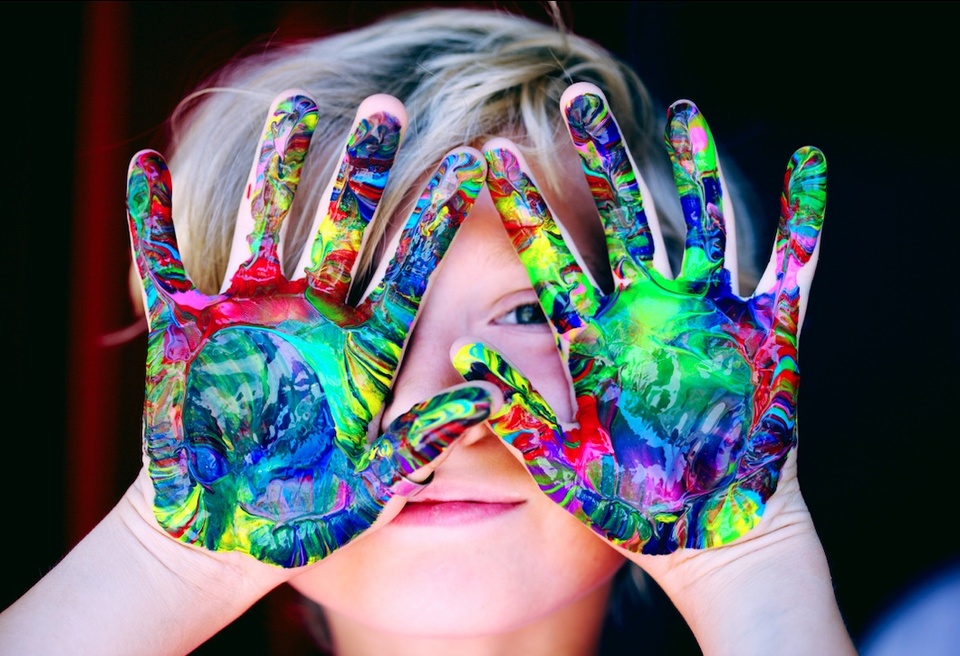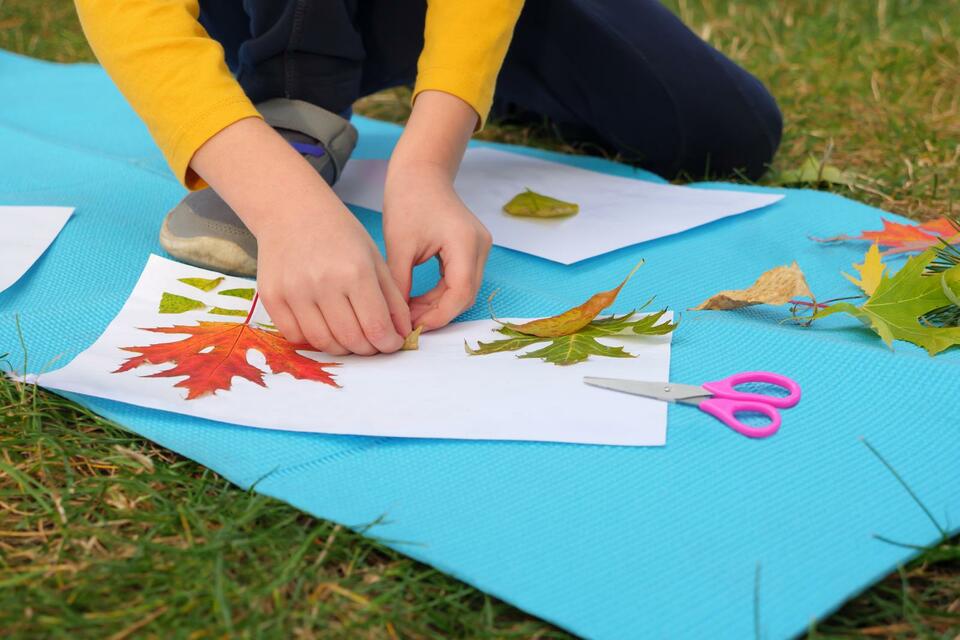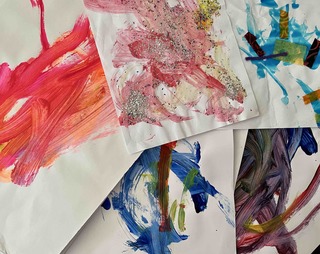Kids Art Work, What Happened To Yours?
As an artist myself at Collette Contemporary Artist, I beleive that decorating your home with your children's artwork is a delightful way to personalise your space and a tangible reminder of the precious moments spent creating together.
My house is adorned with numerous masterpieces crafted by my daughters, each piece carrying the essence of the joyous days we spent painting or drawing side by side. The cherished gifts they both brought home from school and kindergarten also occupy a place of pride.
My Art as a Kid
Reflecting on this artistic journey, I can't help but feel a tinge of nostalgia, wishing I had preserved my earliest creative endeavours. Unfortunately, the oldest piece I possess dates back to my teenage years when I first embraced oil painting.
Despite my yearning for my childhood creations, I understand the challenges my parents faced with the sheer volume of artwork I brought home daily. Painting in front of the easel for hours on end became my daily ritual, and collecting all those pieces would have required an extra room to house them all.
These days, there are creative solutions for parents facing the delightful dilemma of managing their children's artwork. One approach is to scan and digitally archive the pieces, allowing for easy access and a trip down memory lane whenever desired. I take it a step further by setting these images to appear randomly as my screensaver, providing delightful surprise moments that brighten my day.
Another option is to laminate the artwork and compile it into a folder. The lamination process not only flattens out any wrinkles but also helps preserve the integrity of the artwork. I've come across inventive parents who use laminated pieces as unique placemats for the family dinner table – a whimsical touch that adds fun to mealtime.
Sentimental Reasons?
Beyond the sentimental value, there are practical considerations for preserving your child's artwork. You never know if one of your children might blossom into a renowned artist one day, and these early creations could become significant pieces of their artistic journey. However, even if fame doesn't await, these artworks are treasured mementos of innocence and days gone by.
Art is vital for children as it is crucial to their overall phychological development. It enhances cognitive skills by promoting problem-solving, critical thinking, and spatial awareness. Engaging in artistic activities also helps children develop fine motor skills and hand-eye coordination.
Moreover, art provides a means for emotional expression, allowing children to communicate their feelings and experiences nonverbally. It boosts self-esteem and confidence as children take pride in their creations.
The benefits of art for children are multifaceted. Firstly, it fosters creativity and imagination, encouraging them to think outside the box and explore new ideas. Art also promotes sensory development as children engage with various textures, colours, and materials.
It enhances communication skills by providing a visual language for expression. Additionally, art encourages perseverance and patience as children work on projects, learning to overcome challenges and refine their skills over time. Overall, exposure to art from an early age contributes to well-rounded development and a lifelong appreciation for creativity.
How to Describe a Child's Artwork?
When describing a child's artwork, it's essential to go beyond the visual aspects and consider the emotions, stories, and imaginative processes involved in its creation. Take note of the colours chosen, details included, and overall composition. Additionally, factor in the child's age and developmental stage as you appreciate the uniqueness of each piece.
Describing a child's artwork involves recognising and appreciating the unique elements that make each piece special. It goes beyond the visual aspects and delves into the emotions, stories, and imaginative processes that the child invested in the creation.
Pay attention to the colours chosen, the details included, and the overall composition while also considering the child's age and developmental stage.

What Is Creative Art in Early Childhood?
Creative art in early childhood is a form of self-expression and exploration. It encompasses a wide range of activities, from drawing and painting to sculpting and crafting. Children are encouraged to experiment with different materials, colours, and shapes in this stage, fostering their creativity and imagination.
Creative art in early childhood is not about creating perfect or realistic representations but about the process of discovery and the joy of expressing oneself.
Why Is Art Important for Children?
Art is crucial for children's development as it enhances cognitive skills, promoting problem-solving, critical thinking, and spatial awareness. Engagement in artistic activities also contributes to developing fine motor skills and hand-eye coordination.
Beyond these physical benefits, art provides a means for emotional expression, allowing children to communicate their feelings and experiences in a non-verbal way. Furthermore, art boosts self-esteem and confidence as children take pride in their creative achievements.

What Are the Benefits of Art for Children?
- Fostering Creativity and Imagination: Art encourages children to think creatively and explore new ideas, fostering a mindset that thinks outside the box.
- Sensory Development: Engaging with various textures, colours, and materials in art activities enhances children's sensory development.
- Communication Skills: Art provides a visual language for expression, contributing to the development of communication skills.
- Perseverance and Patience: Working on art projects teaches children perseverance and patience as they learn to overcome challenges and refine their skills over time.
- Well-Rounded Development: Exposure to art from an early age contributes to well-rounded development, instilling a lifelong appreciation for creativity.
You never know if one of your kids might be a well known artist one day and these little treasures from their school days could be really important, but regardless, its more about the special mementos of days gone by and innocence remembered.
Posted: Thursday 18 March 2010
